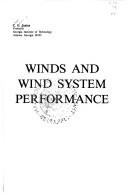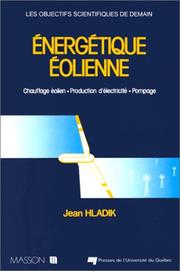| Listing 1 - 10 of 145 | << page >> |
Sort by
|
Book
Year: 2017 Publisher: Washington, D.C. : The World Bank,
Abstract | Keywords | Export | Availability | Bookmark
 Loading...
Loading...Choose an application
- Reference Manager
- EndNote
- RefWorks (Direct export to RefWorks)
Green innovation can become a new driver of growth. It can spur economic growth by (a) enhancing productivity in traditional industries by reducing the energy use and lessening the environmental impact; (b) expanding new green industries, such as renewable energy, clean cars, and waste management; and (c) leapfrogging current technology to give rise to new industries. The Chinese government is hopeful that green innovation will substantially enhance growth, and this study explores that potential. The study analyzes a few specific sectors in which China has varying levels of advancement: wind, solar, and energy storage. These sectors have been chosen on the basis of (a) their central role in China's ability to meet its green growth and greenhouse gas (GHG) reduction goals, (b) China's continuing large public investment into innovation in these sectors, and (c) the expected availability of data to use in the analysis, including outputs such as patenting and inputs such as public and private investment in research and development (R&D). The government plays an essential role in establishing a conducive environment for green innovation. Given the high fixed costs associated, green sectors are even more dependent on the public sectors and favorable regulatory regimes. The recommendations provided in in this study aim to provide China with more comprehensive support for select green sectors.
Book
Year: 2021 Publisher: Washington, D.C. : The World Bank,
Abstract | Keywords | Export | Availability | Bookmark
 Loading...
Loading...Choose an application
- Reference Manager
- EndNote
- RefWorks (Direct export to RefWorks)
The objective of this study is to identify the most suitable zones for solar and wind power development in Pakistan. The study was carried out by a team of expert consultants over a period of 18 months in collaboration with all the key federal organizations in power system planning, led by the National Transmission and Despatch Company (NTDC) as the primary technical counterpart, with the findings reported to the Ministry of Energy (Power Division). This study confirms that Pakistan has excellent resources for economically viable solar power and wind power generation, both of which are mostly untapped so far. Especially noteworthy is the huge potential in western Balochistan for both solar and wind power, which will require significant grid infrastructure investments to be exploited. Further excellent areas with large solar potential are to be found in Sindh and southern Punjab, and the wind corridors in southern Sindh around Jhimpir and Gharo still have more potential than what has been developed so far.
Energy --- Renewable Energy --- Solar Energy --- Windpower
Book
Year: 2021 Publisher: Washington, D.C. : The World Bank,
Abstract | Keywords | Export | Availability | Bookmark
 Loading...
Loading...Choose an application
- Reference Manager
- EndNote
- RefWorks (Direct export to RefWorks)
China's remarkable economic growth required dramatic growth of energy consumption and continuous changes in the nation's energy economy. The World Bank supported the efforts of the Chinese government to develop and revitalize the country's energy sector to meet the daunting challenges it faced while continuously warning that the unrestrained reliance on coal would lead to unsustainable stress on the local and global environment. In mid-1980s, the Chinese government and the World Bank embarked on a long and arduous journey to develop renewable energy (RE) to lessen the impacts on the environment and avoid excessive reliance on coal to alleviate the debilitating power shortages that constrained the economy. This paper focuses on the more than 40-year partnership with the World Bank along China's long journey to develop a large-scale, efficient, and competitive RE industry in the country and globally. While the projects supported by the World Bank and their role are highlighted in this paper, this support should only be seen as a catalyst. The remarkable development of renewable energy in China was primarily guided by the multiple Chinese authorities at the national, provincial, and county levels, implemented by the many public and private companies, and fueled by local financing institutions. The paper is structured along the four stages of RE development in China, which are detailed in a companion report. It highlights the key milestones of this partnership, its achievements, and challenges, detailing World Bank support and main activities that contributed to China's rise from a lagger to a leader.
Energy --- Hydro Power --- Hydropower --- Renewable Energy --- Solar Energy --- Windpower
Book
Year: 2020 Publisher: Washington, D.C. : The World Bank,
Abstract | Keywords | Export | Availability | Bookmark
 Loading...
Loading...Choose an application
- Reference Manager
- EndNote
- RefWorks (Direct export to RefWorks)
The recent advances in battery technology and reductions in battery costs have brought battery energy storage systems (BESS) to the point of becoming increasingly cost-effective projects to serve a range of power sector interventions, especially when combined with PV and where diesel is the alternative, or where subsidies or incentives are used. Quantifying the economic impact of BESS requires a high level of temporal granularity in the analysis, because the time-steps required for a reliable assessment of costs and benefits are much shorter than the usual annual time steps of many power sector investment projects. In short, there is as yet still limited experience in the economic and financial analysis of BESS investment projects particularly, in developing countries, and one cannot yet set out with clarity what constitutes best international practice. This report sets out the principles and practices of BESS economic analysis as required for the World Bank's appraisal of investment projects that cover the range of BESS projects likely to be encountered by the Bank over the next few years.
Energy --- Energy Policies and Economics --- Renewable Energy --- Solar Energy --- Windpower
Book
ISBN: 3870230355 Year: 1992 Volume: 44 Publisher: Münster Ardey
Abstract | Keywords | Export | Availability | Bookmark
 Loading...
Loading...Choose an application
- Reference Manager
- EndNote
- RefWorks (Direct export to RefWorks)
Wind power --- -Wind energy --- Windpower --- Power resources --- Renewable energy sources --- Windmills --- -Wind power --- Wind energy --- Germany

ISBN: 0891680063 9780891680062 Year: 1978 Publisher: Philadelphia (Pa.): Franklin institute
Abstract | Keywords | Export | Availability | Bookmark
 Loading...
Loading...Choose an application
- Reference Manager
- EndNote
- RefWorks (Direct export to RefWorks)
Wind power --- Winds --- Wind --- Weather --- Wind energy --- Windpower --- Power resources --- Renewable energy sources --- Windmills

ISBN: 2760503399 2225801576 9782225801570 9782760503397 Year: 1984 Volume: 13 Publisher: Paris : Masson,
Abstract | Keywords | Export | Availability | Bookmark
 Loading...
Loading...Choose an application
- Reference Manager
- EndNote
- RefWorks (Direct export to RefWorks)
Wind power --- Wind energy --- Windpower --- Power resources --- Renewable energy sources --- Windmills --- Mathematics.
Book
ISBN: 0128498951 Year: 2016 Publisher: London : Academic Press,
Abstract | Keywords | Export | Availability | Bookmark
 Loading...
Loading...Choose an application
- Reference Manager
- EndNote
- RefWorks (Direct export to RefWorks)
Wind power. --- Wind power --- Law and legislation. --- Wind energy --- Windpower --- Power resources --- Renewable energy sources --- Windmills
Book
ISBN: 0128051922 0128040386 9780128051924 9780128040386 Year: 2016 Publisher: Amsterdam, [Netherlands] : Academic Press,
Abstract | Keywords | Export | Availability | Bookmark
 Loading...
Loading...Choose an application
- Reference Manager
- EndNote
- RefWorks (Direct export to RefWorks)
Wind Power Generation is a concise, up-to-date and readable guide providing an introduction to one of the leading renewable power generation technologies. It includes detailed descriptions of on and offshore generation systems, and demystifies the relevant wind energy technology functions in practice as well as exploring the economic and environmental risk factors. Engineers, managers, policymakers and those involved in planning and delivering energy resources will find this reference a valuable guide, to help establish a reliable power supply address social and economic objectives. Focuses on the evolution and developments in wind energy generation Evaluates the economic and environmental viability of the systems with concise diagrams and accessible explanations
Wind power. --- Wind energy --- Windpower --- Power resources --- Renewable energy sources --- Windmills
Book
ISBN: 9535160338 9533073365 Year: 2011 Publisher: IntechOpen
Abstract | Keywords | Export | Availability | Bookmark
 Loading...
Loading...Choose an application
- Reference Manager
- EndNote
- RefWorks (Direct export to RefWorks)
The book "Wind Energy Management" is a required part of pursuing research work in the field of Renewable Energy at most universities. It provides in-depth knowledge to the subject for the beginners and stimulates further interest in the topic. The salient features of this book include: - Strong coverage of key topics - User friendly and accessible presentation to make learning interesting as much as possible - Its approach is explanatory and language is lucid and communicable - Recent research papers are incorporated
Wind power. --- Wind energy --- Windpower --- Power resources --- Renewable energy sources --- Windmills --- Sustainability
| Listing 1 - 10 of 145 | << page >> |
Sort by
|

 Search
Search Feedback
Feedback About UniCat
About UniCat  Help
Help News
News